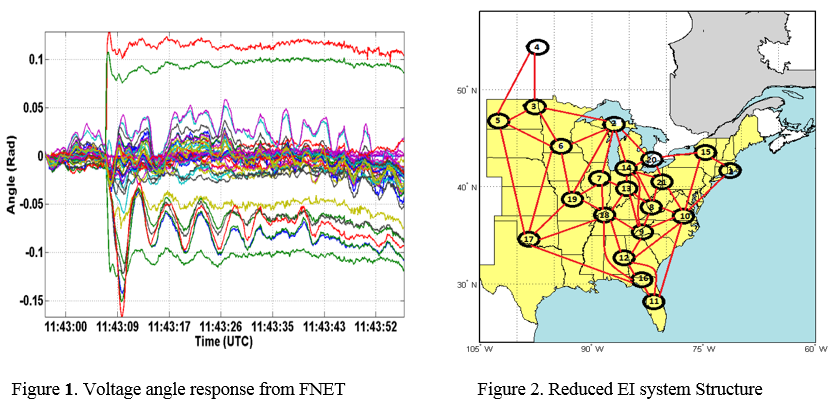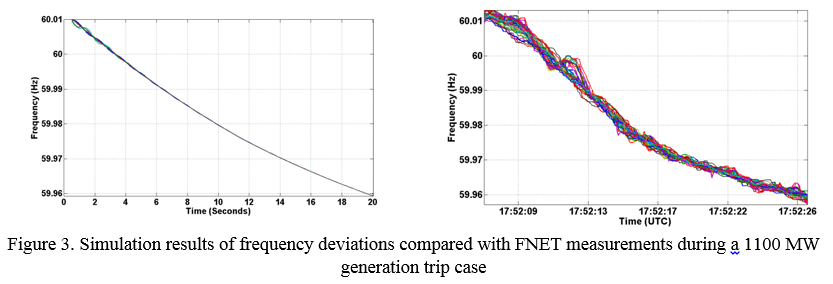This study presents a procedure for constructing the dynamic equivalent of a large power system based on the Frequency Monitoring Network (FNET/GridEye) measurements. It consists of determination of coherent regions, generator and load aggregation, and network reduction. The coherent regions are determined from FNET/GridEye voltage angle responses, as shown in Fig.1 using a divisive hierarchical k-means clustering algorithm. Generator and load aggregation are performed using a detailed model. Load flows transferred between generators in each cluster of the detailed model are then calculated to determine if there is a tie line flow between clusters. The structure of the proposed reduced EI model can be represented by Fig. 2.

The reduced EI model is then built in PSS/E. All the generators are modeled as round rotor generator and attached with a simplified exciter and a turbine governor model. Preliminary simulation results show that the developed system equivalent has the capability to represent some of the dynamic characteristics of the original system. In Fig. 3, it shows a comparison of the reduced system with FNET/GridEye measurements. It can be seen that the frequencies roughly drop 0.06Hz during a period of 20s after a 1100MW generation trip at 0.5s.



